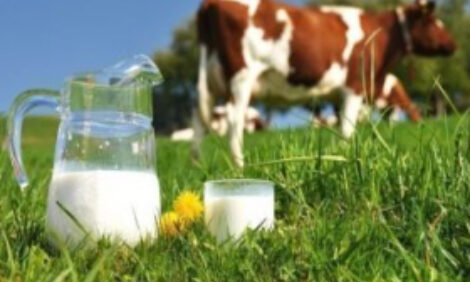



Leukosis Lowdown: Symptoms, Management, Test and Economics
Over 85 per cent of US dairy herds have a bovine leukaemia virus, but with proper management control and even eradication are possible, says University of Minnesota Extension.Often showing no symptoms, bovine leukaemia (or leukosis) can rear its head in the form of enlarged lymph nodes, drops in yield and being condemned to slaughter.
However, Brenda Miller, Extension Educator at the University, gives a holistic approach to dealing with the virus, potentially ridding it form your operation entirely.

What Is Leukosis?
The bovine leukosis virus is found in the lymphocytes (white blood cells) and usually develops in the lymph nodes throughout the body. With the white blood cells being under attack, the immune system is weakened.
Leukosis can be compared to the human disease leukemia, because it affects the white blood cells and HIV, because once an animal has the virus it can't ever get rid of it. Leukosis is transferred mainly through blood, milk (colostrum), contaminated equipment, and high stocking densities. Leukosis cannot be transferred to humans.
Symptoms
Most infected cattle will not have symptoms, 30 per cent of infected cattle will have high white blood cell counts, and 5 per cent of infected cattle will show clinical symptoms.
Some of these symptoms include: enlarged lymph nodes, weight loss, decreased milk production, reproduction problems (infertility), protruding eyeballs, gastrointestinal obstructions, immobility, and mortality. In addition, older cows have a higher incidence of infection than younger cows as they, over time, have been exposed to more needles, palpation sleeves, etc.
When heifers enter the milking string they are involved in many more events such as routine vaccinations, reproductive strategies/synchronizations, calving, hoof trimming, etc. that put them at a higher risk of being exposed to the disease if proper precautions aren't being used.
How Do I Test for Leukosis?
There are two types of tests available for leukosis - blood serum and milk. Both tests are considered 99 per cent accurate. With the blood serum test you can start testing animals at 6 to 8 months of age. Local veterinarians can assist you with sending a sample or some milk testing labs can also run the blood serum sample for you (ask your milk tester/technician).
*
"Identify leukosis positive and negative cows, use single use needles and palpation gloves for each cow, feed colostrum from leukosis negative cows only, or feed colostrum milk replacer."
The ELISA (Enzyme Linked Immuno-Sorbent Assay) milk test is available on an individual cow basis or you can take a bulk tank sample which can detect one positive cow in a herd of 125. Your milk testing laboratory will be able to run the ELISA test when they run your normal DHI samples.
Economics
At some point in time every infected herd will probably incur an economic loss due to leukosis. The most prevalent loss occurs in breeder stock sales (embryos, semen, and cattle). Due to international rules and regulations, semen from a bull that is infected with leukosis cannot be marketed overseas as some international countries have eradicated leukosis.
In addition, in a 2007 study done by the National Animal Health Monitoring System (NAHMS), it was determined that herds infected with leukosis produced 3 per cent less milk than non-leukosis herds.
However, this can vary depending on the prevalence of infection within a herd. Herds with a higher infection rate are more likely to incur greater losses.
Three percent may not seem like a lot but multiply that by your tank average or milk check and see how much that means to you in either dollars or pounds of milk.
Moreover, with the current price of cull cows, a farm could incur some significant losses if carcasses are condemned at slaughter. It is not really economical to cull all positive cows in your herd unless you only have one or two; management is going to be the key instead.
Management
There are a few things a herd can do in order to get leukosis under control.
These include: identify leukosis positive and negative cows, use single use needles and palpation gloves for each cow, feed colostrum from leukosis negative cows only, or feed colostrum milk replacer.
A good idea is to record whose colostrum is fed to each calf. Another option is to pasteurize colostrum and whole milk to denature the BLV virus. In addition, disinfect equipment between animals (scissors, tattoo pliers, tube dehorners, OB chains, tail dockers, etc.). Lastly, avoid overcrowding in pens and use selective culling when making management decisions.
The table below shows an example of recording fed colostrum. Carol is a leukosis negative cow and Jean is a leukosis positive cow.
Bottom Line
Producers are looking at leukosis as another disease that can affect the net performance of their operation. Leukosis testing is one more management tool for those looking for an opportunity for enhanced profitability.


.JPG)


